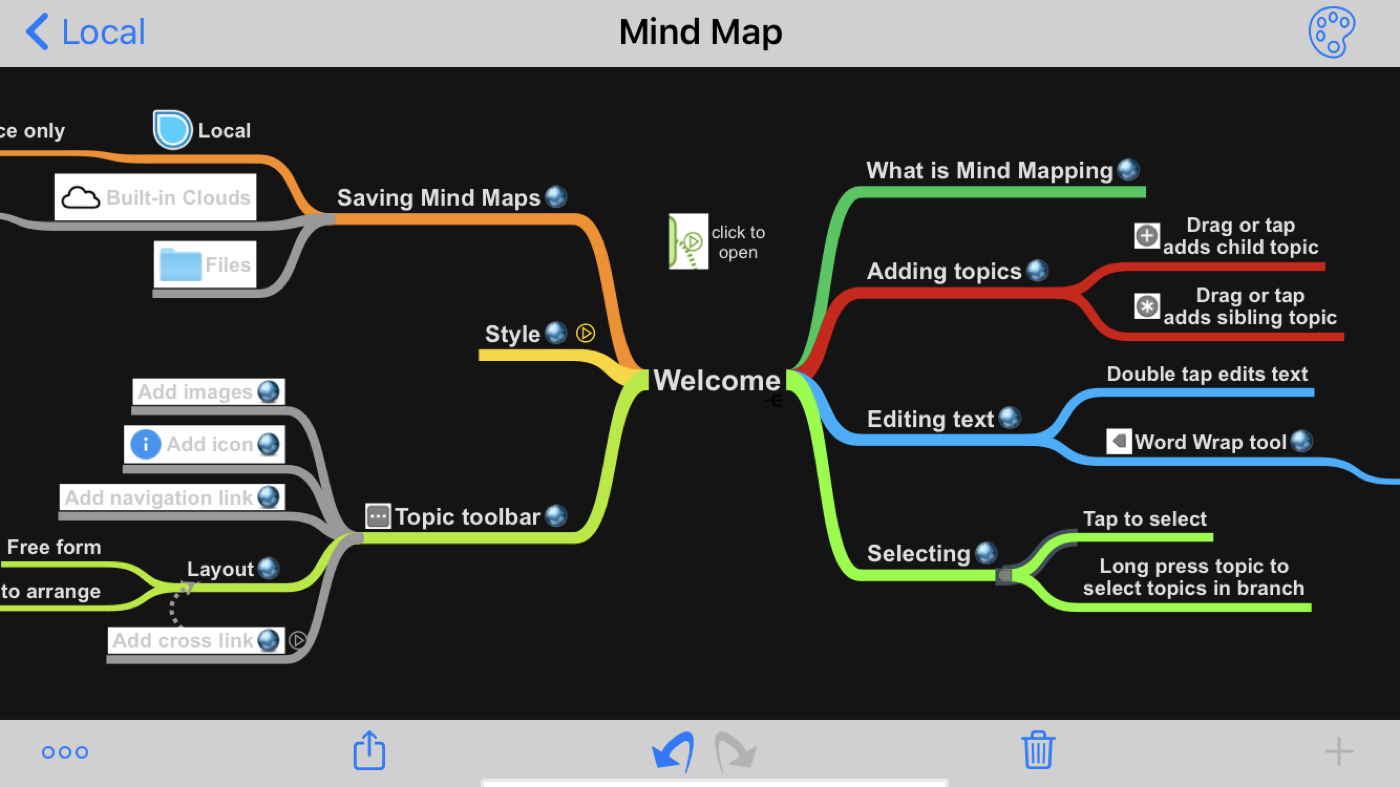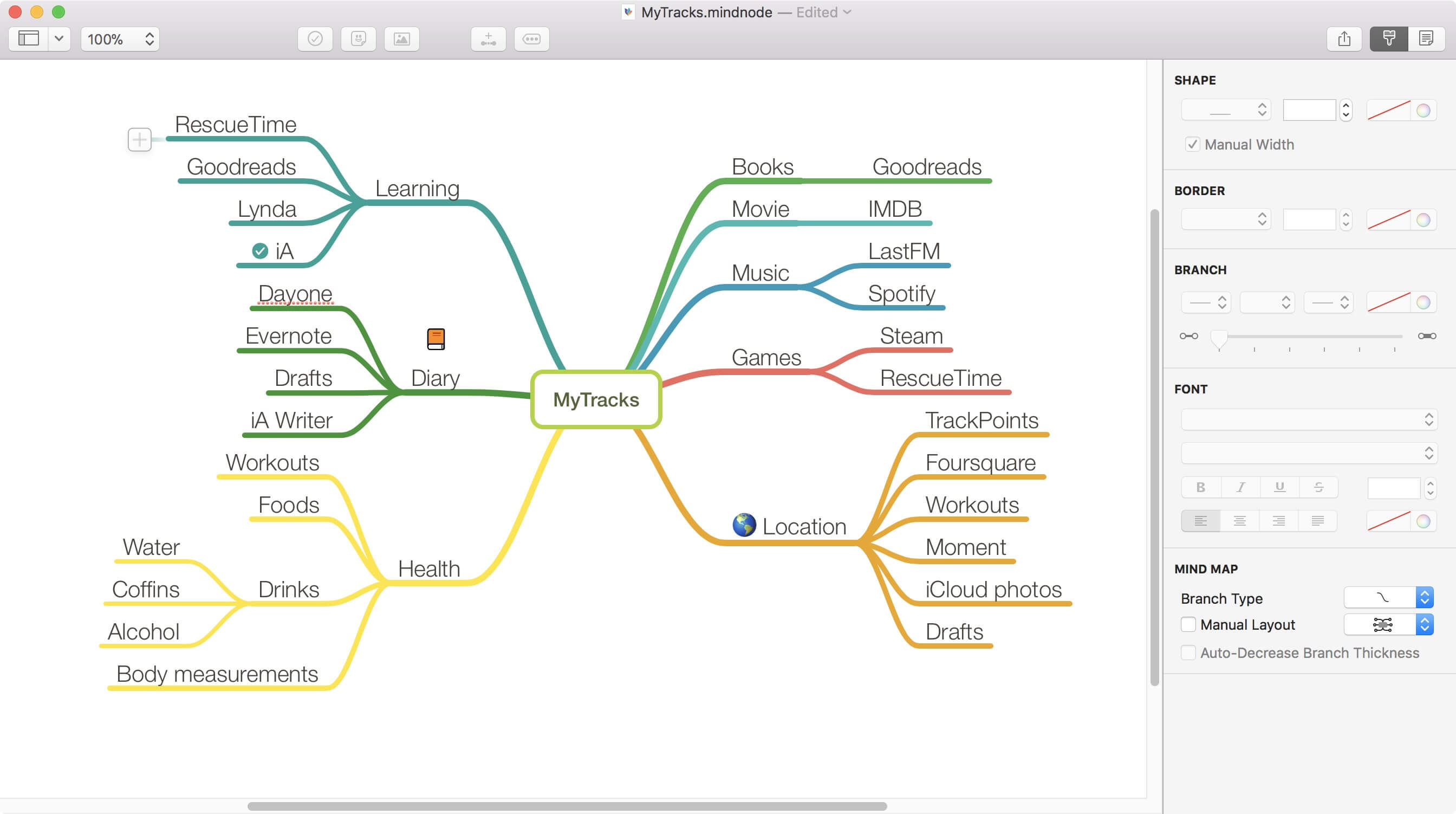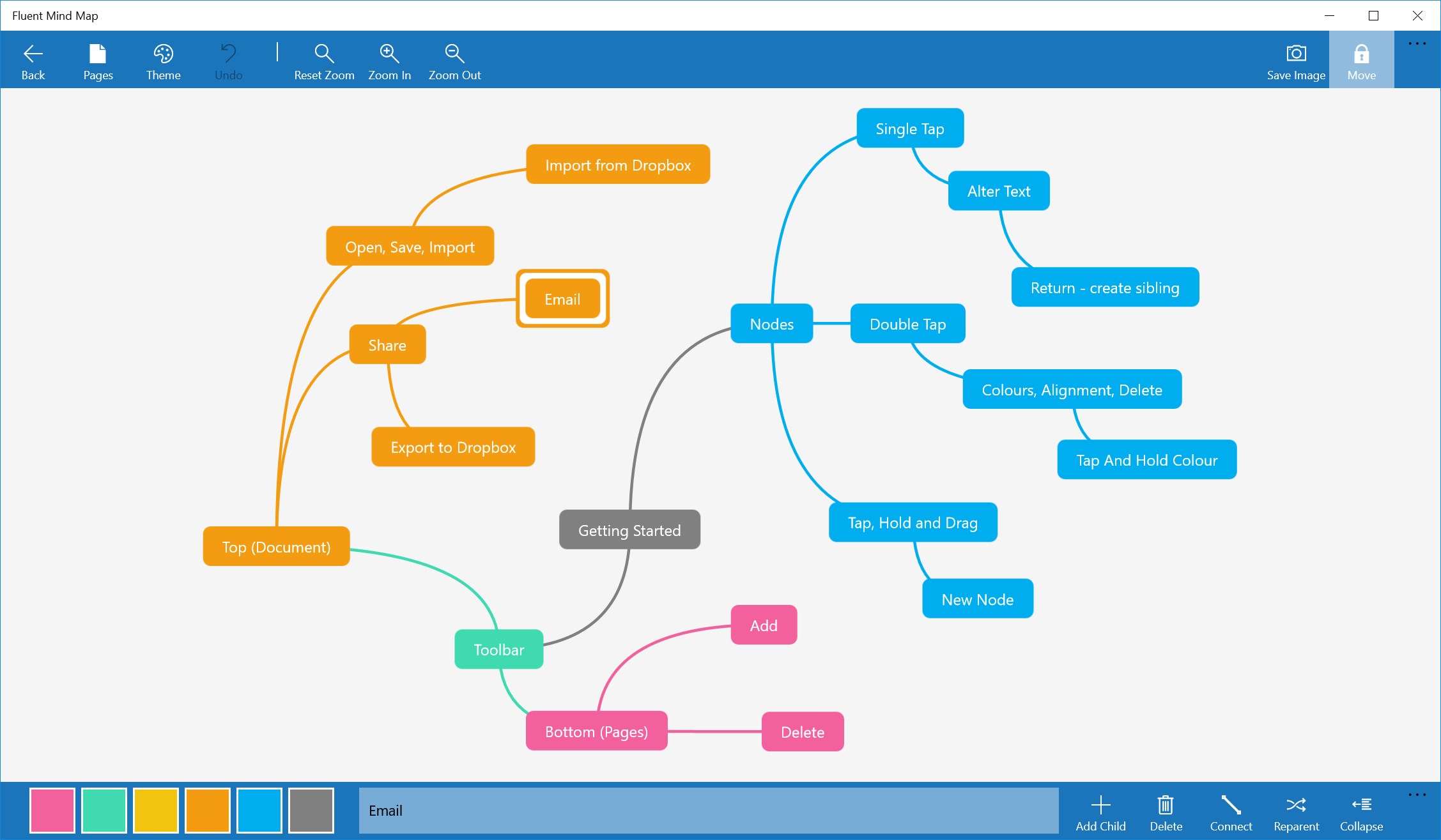Mind mapping apps are revolutionizing the way we brainstorm, take notes, and manage tasks. These powerful tools empower users to visualize their ideas, enhance creativity, and boost productivity.
From students and professionals to creatives, mind mapping apps offer a range of features tailored to specific needs. Whether you’re looking to improve workflow, foster collaboration, or simply organize your thoughts, these apps provide an invaluable solution.
Overview of Mind Mapping Apps
Mind mapping is a graphical technique that helps visualize thoughts, ideas, and information. It involves creating a visual representation of thoughts and concepts using a central topic and branches that extend outwards to connect related ideas.
Mind mapping apps provide a digital platform for creating and managing mind maps. They offer various features that facilitate brainstorming, note-taking, and task management. These apps allow users to easily add, edit, and organize ideas, connect them with branches and sub-branches, and add notes, images, and links to external resources.
Benefits of Mind Mapping
- Enhanced creativity and brainstorming
- Improved note-taking and information retention
- Efficient task management and organization
- Clarity of thought and decision-making
- Enhanced communication and collaboration
How Mind Mapping Apps Facilitate Brainstorming
Mind mapping apps provide a visual canvas for generating and connecting ideas. They allow users to capture thoughts quickly, add branches and sub-branches to explore different perspectives, and easily rearrange ideas to find new connections and patterns.
How Mind Mapping Apps Facilitate Note-Taking
Mind mapping apps offer a structured and visual approach to note-taking. They allow users to organize notes into logical categories, connect related ideas, and add notes, images, and links for additional context and depth.
How Mind Mapping Apps Facilitate Task Management
Mind mapping apps can be used to create visual representations of tasks, projects, and goals. They allow users to break down tasks into smaller steps, assign priorities, set deadlines, and track progress. The visual representation provides a clear overview of the task hierarchy and dependencies, making it easier to manage and complete tasks efficiently.
Features and Functionality of Mind Mapping Apps
Mind mapping apps offer a wide range of features and functionalities to enhance brainstorming, note-taking, and project management. These features empower users to capture ideas, organize thoughts, and collaborate effectively.
Essential Features
- Drag-and-drop Functionality:Effortlessly create and rearrange mind maps by dragging and dropping nodes and branches, allowing for quick and intuitive idea structuring.
- Customizable Templates:Choose from pre-designed templates or create your own to suit specific needs, saving time and providing a consistent framework for mind mapping.
- Collaboration Tools:Share mind maps with others for real-time collaboration, enabling team members to contribute ideas, make edits, and track changes.
Advanced Features, Mind mapping apps
- Mind Map Sharing:Publish and share mind maps online or export them in various formats for easy sharing with clients, stakeholders, or the general public.
- Export Options:Export mind maps to PDF, image, or text formats for seamless integration into presentations, documents, or other applications.
- Integration with Other Productivity Apps:Connect mind mapping apps to other productivity tools like project management software, cloud storage services, or note-taking apps to streamline workflows and enhance productivity.
Types of Mind Mapping Apps

Mind mapping apps can be categorized based on their target audience and the features they offer.
Here are some common types of mind mapping apps:
For Students
- Offer simplified interfaces and templates designed for educational purposes.
- May include features like collaboration and sharing for group projects.
- Examples: MindMeister, XMind, Coggle
For Professionals
- Provide advanced features such as project management, task tracking, and data visualization.
- Designed to enhance productivity and efficiency in business settings.
- Examples: MindManager, iMindMap, TheBrain
For Creatives
- Focus on visual presentation and brainstorming capabilities.
- May include features like freehand drawing, image insertion, and mind mapping from scratch.
- Examples: Miro, MindNode, FreeMind
Free vs. Paid Apps
Mind mapping apps can be either free or paid. Free apps offer basic features, while paid apps typically provide more advanced features and support.
Web-based vs. Desktop Apps
Web-based apps can be accessed through a web browser, while desktop apps require installation on a computer.
Benefits of Using Mind Mapping Apps
Mind mapping apps offer a multitude of benefits that can significantly enhance productivity, creativity, and organization.
Firstly, mind mapping apps streamline the organization of ideas and information. They allow users to visually represent complex concepts, making it easier to identify relationships and patterns. This structured approach to note-taking improves comprehension and retention, boosting productivity by reducing the time spent searching for or synthesizing information.
Enhanced Collaboration and Workflow
Mind mapping apps foster collaboration and streamline workflows. They provide a shared platform where multiple users can contribute and edit ideas in real-time, promoting teamwork and knowledge sharing. The visual nature of mind maps facilitates effective communication, ensuring that all team members are on the same page and can track progress efficiently.
5. Case Studies and Examples

Mind mapping apps have proven their worth in various real-world scenarios. Here are a few case studies and testimonials that highlight their effectiveness:
Successful Use Cases
- Brainstorming and Idea Generation:Mind maps have been instrumental in brainstorming sessions, helping teams generate a multitude of ideas and explore different perspectives.
- Project Planning and Management:Mind maps provide a structured approach to project planning, allowing users to visualize tasks, dependencies, and timelines, ensuring efficient project execution.
- Note-Taking and Knowledge Management:Mind maps offer a flexible and intuitive way to take notes and organize information, making it easier to recall and connect ideas.
- Education and Learning:Mind maps have been widely adopted in educational settings, helping students visualize complex concepts, improve comprehension, and enhance memory.
- Personal Productivity:Mind maps can be used for personal productivity, such as goal setting, time management, and habit tracking, providing a clear and actionable roadmap for achieving desired outcomes.
Testimonials
“Mind mapping apps have revolutionized our brainstorming process. We can now generate a vast number of ideas and organize them effortlessly, leading to more innovative solutions.”
Product Manager, Fortune 500 Company
“Mind maps have been invaluable for project planning. The visual representation allows us to see the big picture and identify potential roadblocks, ensuring smoother project execution.”
Project Manager, Non-Profit Organization
“As a student, mind maps have transformed my note-taking. I can now connect concepts and ideas more easily, resulting in better understanding and exam performance.”
University Student
Best Practices for Using Mind Mapping Apps
Harnessing the full potential of mind mapping apps requires a strategic approach. By following best practices, you can maximize their effectiveness in organizing, structuring, and sharing your ideas.
To optimize your mind mapping experience, consider the following techniques:
Organization and Structure
- Define a clear purpose:Before embarking on your mind map, establish its intended goal, whether brainstorming, note-taking, or project planning.
- Use hierarchical structure:Organize your ideas into a logical hierarchy, with main concepts branching into s and details.
- Leverage colors and icons:Assign different colors or icons to various categories or ideas to enhance visual clarity and organization.
- Utilize branches and sub-branches:Create multiple levels of branches to delve deeper into specific aspects of your topic.
Collaboration and Sharing
- Share mind maps seamlessly:Most mind mapping apps allow for easy sharing with colleagues or team members.
- Invite collaborators:Grant access to others to contribute, comment, and edit your mind maps, fostering collaboration.
- Export in various formats:Export your mind maps into different file formats, such as PDF, PNG, or text, for easy sharing and archival.
- Integrate with other tools:Utilize apps that integrate with mind mapping software, such as task managers or cloud storage services, to enhance productivity.
Future Trends and Innovations in Mind Mapping Apps
The future of mind mapping apps holds exciting possibilities for enhancing creativity, collaboration, and problem-solving. Emerging trends and advancements in technology will further empower these apps, unlocking new levels of functionality and capabilities.
Artificial Intelligence (AI) Integration
AI-powered mind mapping apps will become increasingly prevalent, enabling users to:
- Automate repetitive tasks, such as note-taking and idea organization.
- Generate mind maps based on natural language input.
- Provide personalized recommendations and insights based on user behavior.
Enhanced Collaboration and Sharing
Mind mapping apps will facilitate seamless collaboration and knowledge sharing among teams. Users will be able to:
- Co-edit mind maps in real-time.
- Share mind maps with external stakeholders and control access permissions.
- Integrate mind mapping with other productivity tools, such as project management and communication apps.
Immersive and Interactive Experiences
Mind mapping apps will leverage virtual and augmented reality (VR/AR) to create immersive and interactive experiences. Users will be able to:
- Visualize mind maps in 3D environments.
- Interact with mind maps using gestures and voice commands.
- Explore complex ideas and concepts through immersive storytelling.
Gamification and Learning
Mind mapping apps will incorporate gamification elements to make learning and brainstorming more engaging. Users will be able to:
- Earn points and rewards for completing tasks.
- Compete with others in mind mapping challenges.
- Access educational content and tutorials within the app.
These advancements in mind mapping apps will empower users to unlock their creative potential, foster collaboration, and drive innovation. As technology continues to evolve, we can expect even more groundbreaking developments that will redefine the way we think, learn, and solve problems.
Summary

Mind mapping apps are not just a trend; they are essential tools for anyone looking to maximize their potential. As technology continues to advance, we can expect even more innovative and powerful mind mapping apps to emerge, further enhancing our ability to think, create, and collaborate.
FAQ Resource: Mind Mapping Apps
What are the benefits of using mind mapping apps?
Mind mapping apps offer numerous benefits, including improved productivity, enhanced creativity, better organization, and more effective collaboration.
What types of mind mapping apps are available?
Mind mapping apps come in various types, including free and paid, web-based and desktop, and those designed for specific target audiences (e.g., students, professionals, creatives).
How can I use mind mapping apps effectively?
To maximize the effectiveness of mind mapping apps, follow best practices such as organizing and structuring your mind maps, using visual elements, and collaborating with others.

